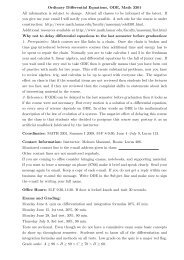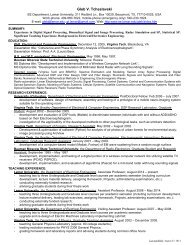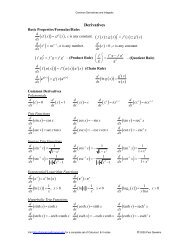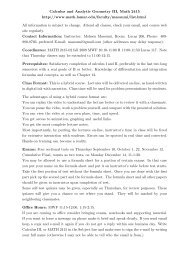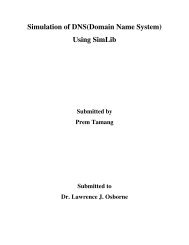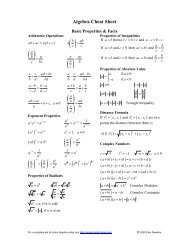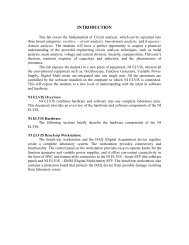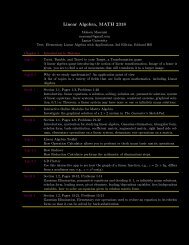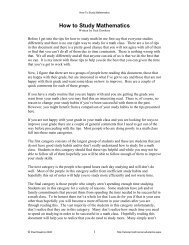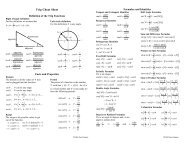Algebra/Trig Review - Pauls Online Math Notes - Lamar University
Algebra/Trig Review - Pauls Online Math Notes - Lamar University
Algebra/Trig Review - Pauls Online Math Notes - Lamar University
Create successful ePaper yourself
Turn your PDF publications into a flip-book with our unique Google optimized e-Paper software.
<strong>Algebra</strong>/<strong>Trig</strong> <strong>Review</strong>There’s another notation for inverse trig functions that avoids this ambiguity. It is thefollowing.−1cos x = arccos xsin−1( ) ( )( x) = arcsin ( x)( x) = arctan ( x)−1tanSo, be careful with the notation for inverse trig functions!There are, of course, similar inverse functions for the remaining three trig functions, butthese are the main three that you’ll see in a calculus class so I’m going to concentrate onthem.To evaluate inverse trig functions remember that the following statements are equivalent.−1θ = cos ( x) ⇔ x=cos( θ)−1θ = sin ( x) ⇔ x=sin ( θ)−1θ = tan ( x) ⇔ x=tan ( θ)In other words, when we evaluate an inverse trig function we are asking what angle, θ ,did we plug into the trig function (regular, not inverse!) to get x.So, let’s do some problems to see how these work. Evaluate each of the following.1.cos⎛ −1 3 ⎞⎜⎝2⎟⎠SolutionIn Problem 1 of the Solving <strong>Trig</strong> Equations section we solved the following equation.3cos( t ) =23In other words, we asked what angles, t, do we need to plug into cosine to get2 ?This is essentially what we are asking here when we are asked to compute the inversetrig function.1 3cos⎛ − ⎞⎜2 ⎟⎝ ⎠There is one very large difference however. In Problem 1 we were solving anequation which yielded an infinite number of solutions. These were,π+ 2 π n, n= 0, ± 1, ± 2, ± 3, 611π+ 2 π n, n= 0, ± 1, ± 2, ± 3, 6© 2006 Paul Dawkins 77http://tutorial.math.lamar.edu/terms.aspx




